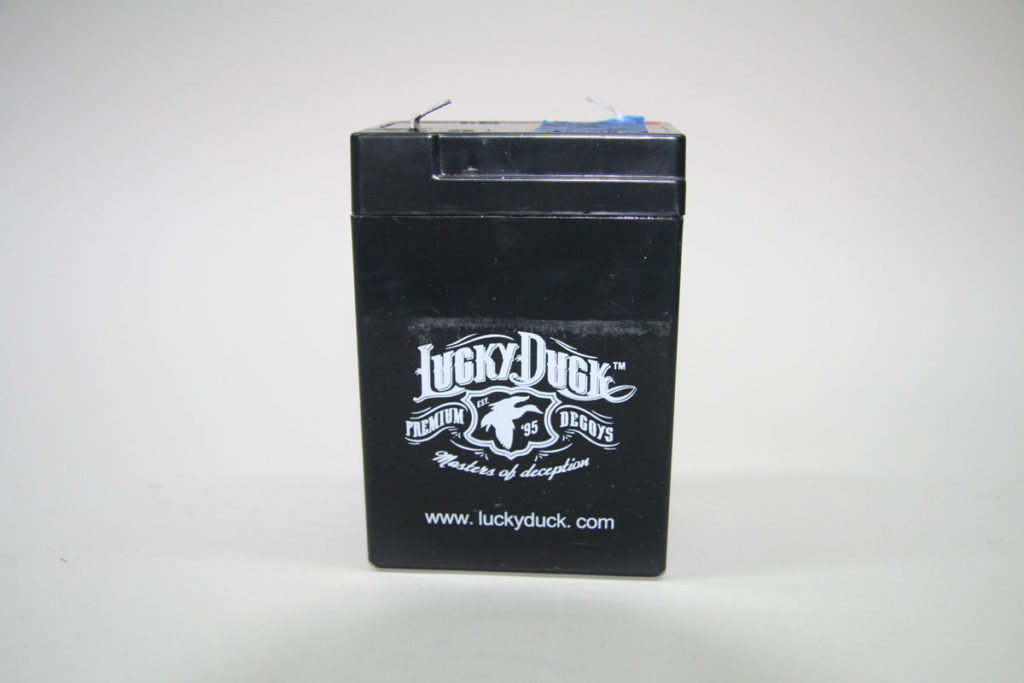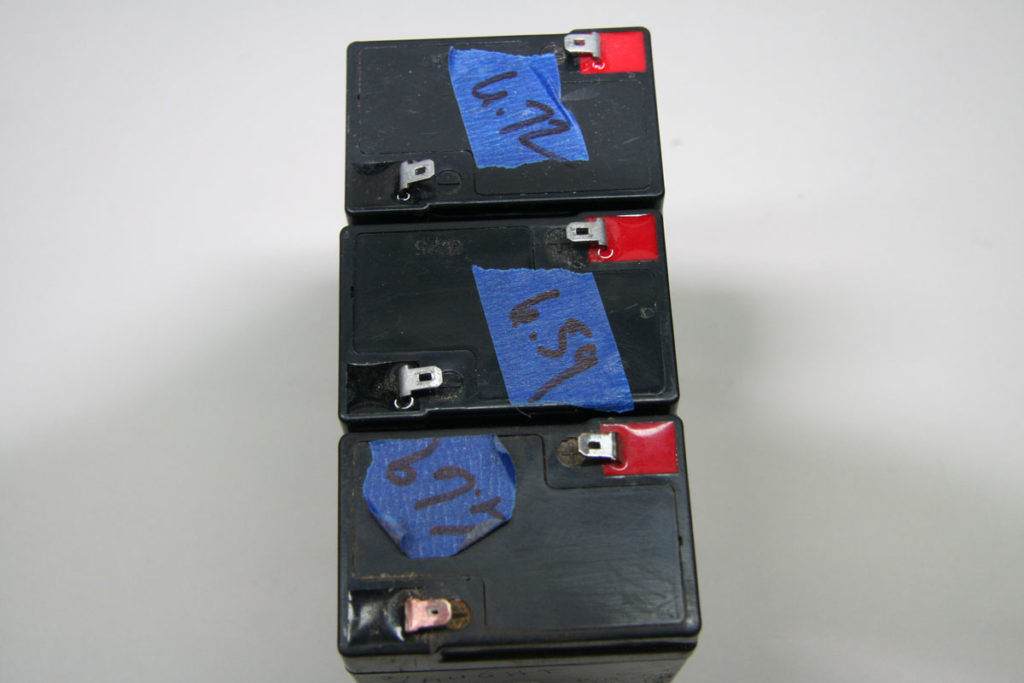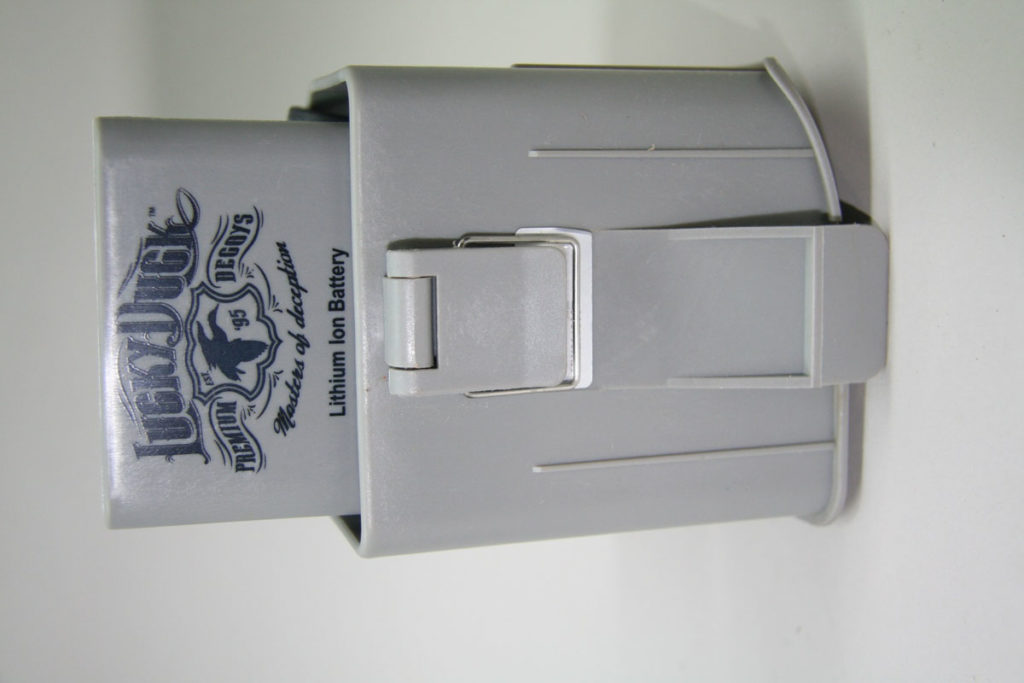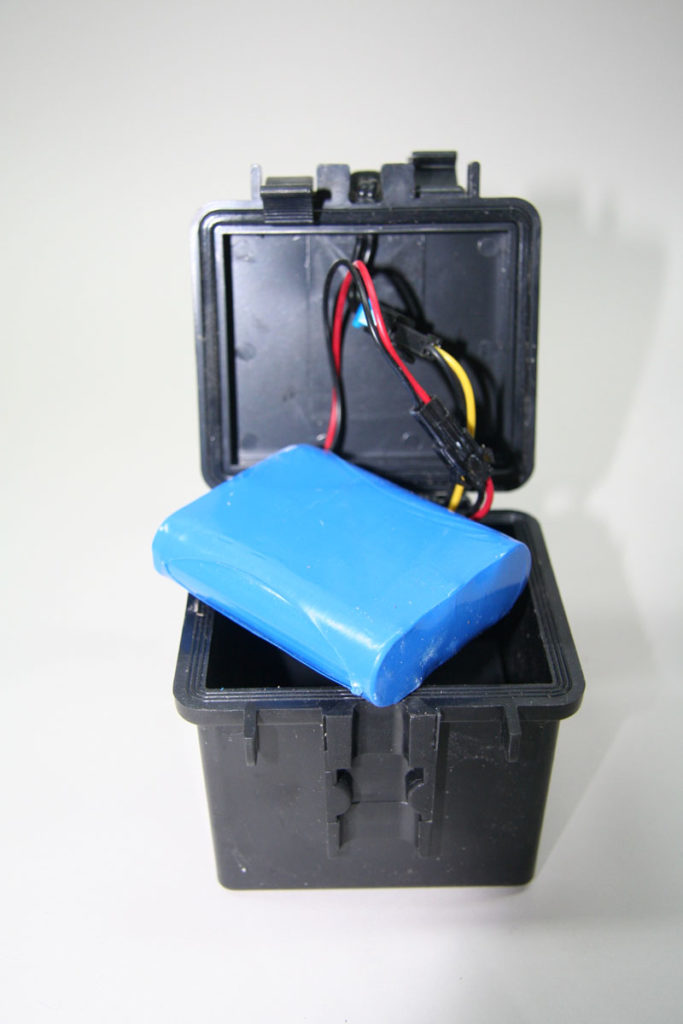
If you are like me, you have a myriad of batteries that run most of what you use throughout the waterfowl season. I have 6-volt, 12-volt maintenance-free sealed lead acid batteries. In addition, I have Lithium Polymer and Lithium Ion in multiples of 3.7-volt cells. Each has attributes worth knowing for use, safety, and storage.
Let us start with your maintenance free sealed lead acid batteries. Most of what we use fall into this category including our spinners, flappers, and many other water motion decoys. Maintenance free lead acid batteries are stable and operate in just about any environment. They have a long history dating back to the late 1800’s and as a rechargeable battery, they hold a huge market share. Their optimum use temperature at about 77 degrees though is far from what we tend to experience in waterfowl hunting. As the temperature rises, battery-life shortens and as it gets colder battery performance diminishes. Luckily, for us waterfowl hunters, we are not trying to start a car, only spin, flap and move water. However, to that degree leaving your batteries in the extreme cold does have an effect on performance.

All of these batteries in this category have ratings. More particularly discharge ratings. In other words, how much energy can be stored in the battery? I typically run my Lucky Duck spinners using a 6-volt 4.0 amp/hour battery. This means I can draw 4.0 amps out of this battery for one hour, but because my decoys draw less, I can run them for several hours if not days. More to the point, I can draw .4 amps out of the battery for ten hours. That is closer to what I need and use.
There are advantages and disadvantages to these types of batteries.
Pro:
Maintenance free and no spilling of acid
Durable and reliable
Will take multiple charges
Operate at many temperatures
Cheap
Self-discharge is low
Can provide high discharge rates
Cons:
Heavy
Cannot be stored in a discharge state
Limited full discharge states
Environmentally require proper recycling
Transportation restrictions
Can be incorrectly charged
Take a long time to charge
Maintenance free sealed lead acid batteries are most likely our go-to batteries for most applications. You have to take care of them though. Here are a few tips:
- Make sure you charge the batteries before storing them.
- Write down the voltage after charging and check this about every three months as they will self-discharge in storage.
- Store at room temperature.
- Charge using the correct charger and amperage input.
- Recycle when damaged.
- Don’t over-discharge – as the decoy starts to slow, consider stopping the use.

As the market place seeks a new and innovative way to provide the outdoor industry with power, the use of Lithium Polymer and Lithium Ion batteries are starting to become more commonplace. The advantages are numerous but mostly we appreciate the lighter weight and increased performance. These batteries also have some special needs and if one follows some standard procedures, the life of these batteries is greatly increased.
I flew radio control airplanes for years and was around when they started progressing toward battery power. Early Nickel Metal Hydride batteries soon replaced Lithium Polymer or LiPo chemistry. The advantages of high power for a longer period was a great improvement, but the downside was a very quick drop off in power once the battery discharged. Chargers also had to be specific to this type of battery. Lithium-Ion batteries we have become accustomed to with our power tools are also entering the decoy marketplace.

Lithium Polymer batteries as are Lithium Ion Batteries have their cells in multiples of 3.7 volts. Therefore, we see 3.7 volts, 7.4 volts, and 11.1-volt batteries voltages. It is common to find a 7.4-volt battery in a 6-volt application or an 11.1-volt battery in a 12-volt application. Here is how they differ:
- Lithium-Ion batteries cost less, have the ability to deliver more power quicker, and have a low self-discharge thus allowing for storage over a longer period. Lithium Ion batteries have no charge memory effect.
- Lithium Polymer batteries have a lower change of leaking electrolytes, store less power, have a shorter life span than Lithium Ion and are costly to manufacture.
I believe the decoy industry is moving towards Lithium Ion as their choice of batteries and I have them in a Lucky HDI spinner and Hidgon Pulsator XS. Both have specific chargers and both charge relatively quickly. What I want to provide is what to do over the summer in storing these batteries.

First, this type of battery chemistry does not like to be at full charge during storage. Somehow, you have to figure out what is about 40% of a full charge. For my spinners, I run them down and then recharge the battery. Once I know the run time, I can run it back down about 60%. Lucky Duck provides a battery level indicator that will show when the battery is between 25% and 75%. That might be close enough in making sure the battery is not at full capacity for storage. My best application of this theory is to run the HDi for about 12 hours. I use an RPM strobe to measure the wing rotation and after 12 hours, I see little change. What I do notice is the lights indicate the charge diminishes from a full charge. Some high-end chargers will actually discharge the battery to a level of 40% for you. Keep those batteries at room temperature, avoid full discharges, and make sure you charge them correctly. For all batteries of these chemistries make sure you use caution in charging as they could combust.
Storing your batteries over the summer makes sense and will save you money in the end. Nothing worse than realizing right before the season your batteries are no good.